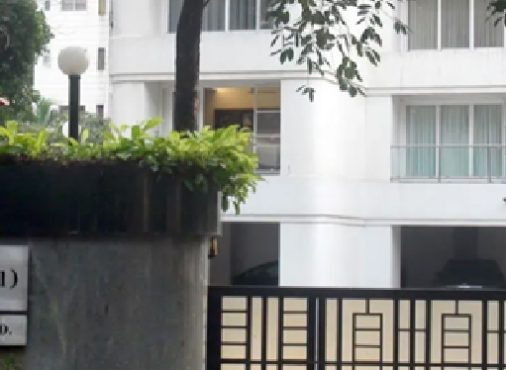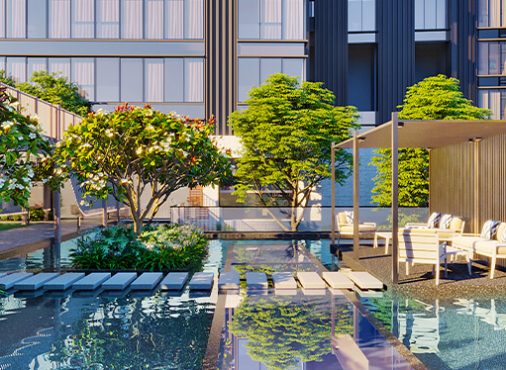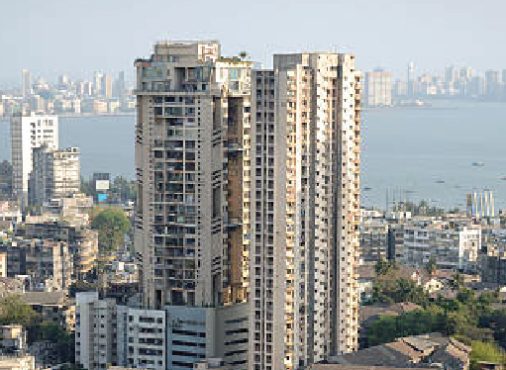The wonderful world of Sustainable Villa Rustomjee Belle Vie located in Sahyadris is a creation that places supreme importance on environmental sustainability.
If a sustainable villa is put up in this development, one will be able to have the best of the world’s comfortable living and be part of nature at the same time. It is for this reason that Rustomjee Belle Vie offers one the best chance for a clean, green residence that does not compromise on form or function.
Sustainable Design Principles: Building with the Earth in Mind
The concept of a sustainable Villa Rustomjee Belle Vie must undertake key design features that minimise the effect of the villa on the environment from the construction to the disposal phase. Here are the core elements to consider:
● Natural Light Optimisation
Try to incorporate more windows and skylights to minimise the need for artificial lighting during the day. Fans of the freeware version of the game have expressed concerns about the lack of light sources, which makes players feel confined. However, players should focus on reflecting light across the map to ensure an even distribution of light.
● Energy-Efficient Architecture
It’s easy to appreciate buildings that incorporate natural cooling and energy-saving materials, such as insulation, cool roofs, and thermal mass.
Read Also: The Role of Architecture and Landscaping in Modern Luxury Homes
Orient your villa’s rooms in such a manner that in the hot months of the year they will be protected from sun during the day and meanwhile, during colder times of the year, sun exposure is welcomed.
● Water Conservation Methods
Practice rainwater harvesting and use greywater recycling, so that water conservation can be effectively managed. Choose appropriate fittings to minimise the amount of wasted water.
● Local Material Usage
It is economical and environmentally friendly to acquire materials from close proximate sources as this minimises emissions resulting from transportation.
● Native Landscaping
Choose drought-resistant plants like succulents, native grasses, and shrubs that thrive with minimal water and require low maintenance.
● Solar Energy Integration
Solar power is efficient in delivering power to your villa to a limited extent, thus helping you sever your dependence on nonrenewable energy.
● Natural Ventilation Systems
While designing the windows and vents, special emphasis should be put on cross-venting to eliminate the use of artificial air conditioning.
● Waste Management Solutions
Keep composting and separating wastes and properly disposing of them to decrease contributions to the landfill.
Here are some benefits of each feature:
| Feature | Benefits |
| Natural Light Optimization | Reduces energy needs for lighting. |
| Energy-efficient Architecture | Improves thermal comfort and minimises energy use. |
| Water Conservation | Lowers water bills and reduces water footprint. |
| Local Material Usage | Cuts down on CO2 emissions and supports local businesses. |
| Native Landscaping | Reduces water needs and fosters a healthy ecosystem. |
| Solar Energy Integration | Provides renewable energy, reducing grid dependency. |
| Natural Ventilation | Enhances indoor air quality and reduces cooling needs. |
| Waste Management | Reduces waste and promotes sustainable living. |
Climate-Responsive Architecture: Adapting to the Kasara Hills
The blessings of scarcity encourage the emerging climate-responsive architecture at Rustomjee Belle Vie, and these lessons are well illustrated at Rustomjee Kasara. Incorporate a natural climate into your villa for efficient use of energy in the building.
● Location Advantages
The houses were constructed on the hilltop with the choice of direct sunlight and natural ventilation throughout the year, making the buildings naturally energised.
● Natural Ventilation Strategies
One effective method is cross-ventilation, which involves orienting doors and windows to act as ventilation shafts, allowing fresh air to move through the space efficiently. Another technique is stack ventilation, which uses windows at different heights to help expel warm air, creating a natural airflow that cools the interior.
● Seasonal Considerations
As part of the roof design, include deep eaves or overhangs to block heat from the sun in months with high temperatures as well as protect against rain in other months. For thermal storage choose brick or stone type selections to be conserved for colder months.
● Building Orientation
Position the villa in such a way that the summer sun does not directly penetrate the villa while during winters one has to be in a position to enjoy the sun.

Energy Efficiency Features: Powering Your Sustainable Villa
It is crucial for energy efficiency to be a key strategy when designing sustainable villas. Here are some features to include:
● Solar Panel Integration:
Solar photovoltaics on rooftops can generate a significant portion of your villa’s electricity, helping to reduce energy consumption.
● Natural Lighting Solutions
Integrate large opening windows and natural light shafts, and use reflective colours on the room’s walls to reduce artificial lighting.
● Insulation Methods
Insulation makes your house comfortable throughout the year by limiting the time to use the heater or cooler in the house.
● Energy-saving Appliances
As a factor related to power-related cost-cutting, make sure that your villa is fitted with energy-diverts devices and appliances.
Water Conservation: Preserving a Precious Resource
Water conservation is so important in enhancing sustainability. Here’s how to incorporate it into your villa’s design:
● Rainwater Harvesting
Hunt for water from your roof and tap it for gardening, washing, and any purpose apart from drinking.
● Greywater Recycling
Capture and use water from sinks/showers for uses such as irrigation, or other nondrinking water consumption purposes, to conserve water.
● Native Landscaping
Plant drought-resistant varieties of plants to minimise the use of water when putting in place made landscaping.
● Water-efficient Fixtures
Reduce water consumption by using low-flow faucets, showerheads, and toilets.

Building Materials: Choosing Sustainable Options
Opting for sustainable materials significantly lowers your villa’s environmental impact:
● Local Material Options
Purchasing raw materials from nearby suppliers eliminates emissions during transportation and also encourages local industries.
● Eco-friendly Alternatives
Materials such as bamboo, cork, or recycled material are very durable without costing our world a fair.
● Recycled Materials
Use materials that have been sourced and used again in the construction of the villa including re-used timber and recycled metal.
Read Also: A Guide to Choosing Wall Colours for Each Room of Your House
Indoor Air Quality: Breathing Easy in Your Sustainable Home
Clean, fresh air indoors is desirable for health, and factors that affect it must be therefore managed. Here are tips to keep the air clean:
● Low VOC Materials
Limit volatile organic compounds (VOCs) to maintain safe indoor air quality.
● Air Purifying Plants
Use ornaments such as spider plants or peace lilies inside a residence to help eliminate the bad air.
● Ventilation Systems
For air circulation issues, only natural ventilation is insufficient, so one should consider some energy-saving ventilation for air quality.
Landscaping Guidelines: Creating a Sustainable Oasis
Your villa’s surroundings can play a big role in its sustainability:
● Native Plant Selection
Select plants appropriate to the climate in your area to avoid having a high water consumption garden.
● Water-efficient Gardens
Minimise water requirements by using xeriscaping techniques, especially in using mulch and in gravel areas that may require it.
● Natural Shade Creation
Offer to shade or grow trees or use pergolas when arranging your villas if you experience hot seasons in your climate.
● Local Biodiversity Support
Develop a natural environment that can circle wild animals in a given region, which increases the level of diversity.
Waste Management: Minimising Your Environmental Footprint
Waste management is crucial in the achievement of sustainable value. Here are key practices:
● Composting Systems
Organically recycle waste products through compost-making to act as a natural manure for your plants.
● Recycling Solutions
This means that special containers for collecting recyclable materials should be placed so that they would be distinguished from ordinary garbage bins and rare in the usage of landfills.
● Construction Waste Management
Construct organisational plans that will reduce waste and, where feasible, incorporate recycling.
● Sustainable Disposal Methods
Bury or recycle any hazardous waste properly, rather than burning it or dumping it anywhere.
Conclusion
Designing a sustainable villa at Rustomjee Kasara is a chance to construct an environmentally responsible luxurious homestead. The result is more sustainable practices in architecture, energy use, and waste management, and in doing so will improve the well-being of your descendants. For more information, contact us or visit Rustomjee Belle Vie and begin constructing your green dream villa now.
FAQs
1. What sustainable features can I incorporate into my villa design?
Solar panels, rainwater harvesting, energy-efficient appliances, and eco-friendly materials are excellent options.
2. Are there any government incentives for sustainable homes in India?
Yes, some states and municipalities offer subsidies or tax breaks for sustainable construction practices. It’s worth checking with local authorities.
3. How can I find an architect or builder specialising in sustainable design?
Look for professionals certified by organisations like LEED (Leadership in Energy and Environmental Design) or IGBC (Indian Green Building Council).
4. How much maintenance do sustainable features typically require?
Maintenance needs vary depending on the features. Solar panels typically require minimal maintenance, while rainwater harvesting systems may need occasional cleaning.
5. Can sustainable features be incorporated into existing homes?
Many sustainable features, like low-flow faucets and LED lighting, can be retrofitted into existing homes.








